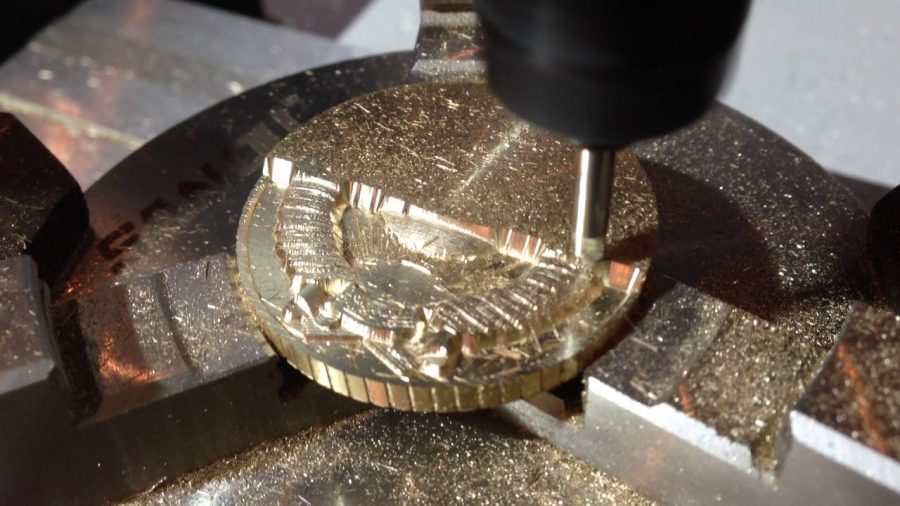Bronze, an alloy primarily consisting of copper and tin, is a versatile material known for its excellent mechanical properties, corrosion resistance, and aesthetic appeal.
Machining bronze can be straightforward, provided the right tools and techniques are employed. Its machinability primarily hinges on the specific alloy used—phosphor bronze, for instance, is renowned for its fine grain and ease of machining, making it a preferred material in intricate component manufacturing.
This guide provides comprehensive insights into bronze machining, covering material properties, tool selection, machining processes, and best practices.
Material Properties of Bronze
Understanding the properties of bronze is essential for effective machining:
Composition: Bronze typically consists of copper (Cu) and tin (Sn), but may include other elements like aluminum, nickel, or phosphorus to enhance specific properties.
Mechanical Properties: Bronze is known for its strength, ductility, and wear resistance. It has a lower hardness compared to steel, making it easier to machine.
Thermal Properties: Bronze has good thermal conductivity, which helps in dissipating heat during the machining process.
Corrosion Resistance: Bronze is highly resistant to corrosion, particularly in marine environments, making it suitable for a wide range of applications.
Tool Selection for Bronze Machining
Bronze machining requires precision and professional knowledge to achieve optimal results. Choosing the right tools is critical for efficient and precise bronze machining:

Cutting Tools:
Carbide Tools: Carbide tools are preferred for bronze machining due to their hardness and wear resistance. They maintain sharp cutting edges and withstand higher cutting speeds.
High-Speed Steel (HSS) Tools: HSS tools can also be used for bronze, especially in operations requiring intricate detailing or lower cutting speeds.
Speed adjustment:
Maintain a medium to high cutting speed to prevent work hardening, the specific speed depends on the bronze alloy.
Feed rate:
The optimal feed rate can reduce tool wear and improve surface smoothness. Adjust the feed rate based on the complexity of the assignment and the type of bronze alloy.
Use of coolant:
Use sufficient amount of coolant to extend tool life and prevent overheating, as overheating can cause material deformation.
Machining Processes For Bronze
Machining process:
CNC milling: a computer-controlled process that can accurately carve, drill, and shape bronze to the desired size.
Turning: Using a lathe, bronze rotates relative to the cutting tool to form symmetrical parts.
Drilling: In order to create holes and cavities, the drill bit will accurately penetrate the bronze.
Grinding: used to polish the surface to precise dimensions and smoothness specifications.
Post processing:
Deburring: Remove any rough edges or spikes left by mechanical processing.
Polishing: Improve the aesthetic and functional quality of bronze components.
Heat treatment: Sometimes it is necessary to improve the properties of metals, such as hardness and stress resistance.
Inspection and testing: Use tools such as calipers and coordinate measuring machines to check the quality and compliance of each component with specifications.
Surface Treatments For Bronze Machined Parts
Bronze machined parts can be precision machined using various techniques to enhance their aesthetics, improve corrosion resistance, or meet specific functional requirements. The following are some common bronze surface treatments:
Polishing
Polishing bronze components can produce a high gloss surface, enhancing the visual appeal and surface smoothness of the material. This surface treatment is very suitable for decorative items or components that are exposed to the operating environment and require a visually appealing surface.
Coatings:
Chemical coatings are applied to bronze to improve corrosion resistance, enhance appearance, and provide color variation. These coatings involve chemical solutions that react with the surface of bronze to form a protective layer.
TiN (Titanium Nitride) Coating: TiN-coated tools offer enhanced wear resistance and prolonged tool life.
TiCN (Titanium Carbonitride) Coating: TiCN coatings provide higher hardness and lower friction, which are beneficial for bronze machining.
Anodizing
Although anodizing is not as common as aluminum and other materials in bronze, it can be applied to certain bronze alloys to improve surface corrosion resistance and provide decorative finishes with various colors.
Electroplating
Electroplating involves the electrochemical process of depositing a thin layer of another metal, such as nickel, silver, or gold, onto bronze. This not only enhances the appearance but can also increase surface hardness and corrosion resistance.
Best Practices for Bronze Machining
Implementing best practices can significantly improve the outcomes of bronze machining:
Tool Maintenance: Regularly inspect and maintain cutting tools to ensure sharpness and accuracy. Replace worn-out tools promptly to maintain machining quality.
Workpiece Fixturing: Secure the workpiece properly to prevent movement or vibrations during machining, which can affect the precision of the final product.
Machining Parameters: Optimize cutting parameters (speed, feed, depth of cut) based on the specific bronze alloy and desired surface finish.
Chip Control: Use chip breakers or specialized tool geometries to manage chip formation and evacuation, preventing damage to the workpiece and tool.
Surface Finishing: Employ appropriate surface finishing techniques, such as polishing or buffing, to achieve the desired aesthetic and functional properties.
What Sets Bronze Apart From Other Metals?
Compared to other common machined metals, bronze has significant advantages, including:
Corrosion resistance: Compared with metals such as steel, bronze has strong corrosion resistance, especially in marine environments.
Sparkless: Unlike black metals, bronze does not produce sparks during impact and is an ideal choice for explosive environments.
Machinability: Bronze alloys typically have good machinability and can effectively manufacture parts.
Wear resistance: Many bronze alloys have excellent wear resistance and are suitable for bearings, gears, and similar components.
Aesthetic appeal: Bronze has a unique aesthetic appeal, with warm and golden tones, which are often used in art and architecture.
Thermal conductivity: Bronze has good thermal conductivity and is suitable for heat exchanger applications.
Conclusion
Bronze machining, when done correctly, can yield high-quality components with excellent mechanical properties and aesthetic appeal. By understanding the material properties, selecting the right tools, and following best practices, machinists can effectively work with bronze to produce precision parts for a wide range of applications. Whether you’re turning, milling, drilling, or reaming, this comprehensive guide provides the foundational knowledge needed for successful bronze machining.



